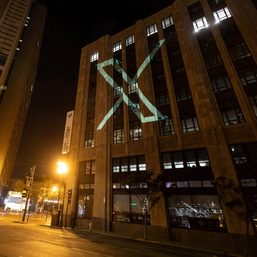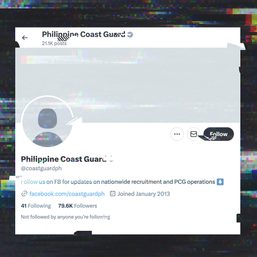SUMMARY
This is AI generated summarization, which may have errors. For context, always refer to the full article.
MANILA, Philippines – Some may not be in favor of the act of impeaching a Chief Justice. Questions arise over motives and intent. But the impeachment trial exposes the public to issues hounding a secretive institution as well as the inner workings of the justices who lead it.
In 1997, the Philippine Center for Investigative Journalism wrote why it seemed so hard to track down corruption in the judiciary. Veteran journalist Sheila Coronel, now director of Columbia University’s Toni Stabile Center for Investigative Journalism, wrote in her article “Justice to the Highest Bidder,” that those who were willing to pay for a favorable decision used intermediaries to relay their proposition to a justice. Few dared to speak about it; there was hardly any paper trail.
Under the term of then Chief Justice Andres Narvasa, Coronel wrote that the son of then SC Associate Justice Hugo Gutierrez met with the staff of then SC Associate Justice Abraham Sarmiento to ask if P3 million was enough to secure the latter’s vote in a case involving Banco Filipino.
Sarmiento told Coronel that he reported the case to the High Court, but nothing came out of it because his staff didn’t want to execute an affidavit. Gutierrez did not inhibit from the case despite this report.
Four years before this, on Jan. 28, 1993, PCIJ reported that Gutierrez, who was then the most senior SC justice, faked authorship of a decision upholding the right of the Philippine Long Distance Telephone Company (PLDT) to block the operation of an international gateway by its rival at the time, Eastern Telecoms.
Four days after the publication of the story, Gutierrez was forced to quit.
The SC committee that probed him eventually exonerated him of wrongdoing. Instead, according to the PCIJ, the High Tribunal held Emil Jurado, a Manila Standard columnist who also wrote about the issue, in contempt of court.
Rather than disciplining erring colleagues, Narvasa was accused of condoning them.
On the same year that Gutierrez was forced to quit, Coronel wrote that lawyers filed a letter-complaint charging that in 1991, Narvasa’s brother-in-law, Joaquin Yuseco, had asked Justice Rodolfo Nocon to forego the raffle of a case involving a multi-million peso transaction and assign it to a particular justice. Nocon was then presiding justice of the Court of Appeals. The assignment of cases other than by raffle violated the internal rules of the Court of Appeals.
History repeats
Those incidents seem like history.
Fourteen years later, a similar case would transpire.
In 2007, Newsbreak reported that then SC Associate Justice Consuelo Ynares-Santiago was suspected of accepting bribe money.
The SC also formed a committee composed of retired justices, who later exonerated the lady justice. The High Tribunal, however, found Amado Macasaet, columnist and editor of the newspaper Malaya who first wrote about the alleged payoff, guilty of indirect contempt and fined him P20,000.
There are cases when justices are penalized. And there are times when the justices simply resign, such as in the following instances:
-
Imelda Marcos’ uncle, Justice Norberto Romualdez, resigned in the 1930s after his daughter allegedly stole a copy of the bar exam for her boyfriend, who was one of the examinees.
- Chief Justice Roberto Concepcion took a leave less than 2 months before his retirement in 1973, after the SC upheld the 1973 Marcos Constitution in the Javellana v. Executive Secretary case. The Court was divided on this issue. Petitioners and critics questioned the ratification of the charter that prolonged the stay of then President Ferdinand Marcos in power. Marcos had by then already placed the country under martial law.
- On May 7, 1982, cheating in the 1981 bar examinations caused the mass resignation of Chief Justice Enrique M. Fernando and Associate Justices Claudio Teehankee, Felix V. Makasiar, Antonio P.Barredo, Ramon C. Aquino, Ramon O. Fernandez, Juvenal K. Guerrero, Pacifico P. de Castro, Amuerfina A. Melencio-Herrera, Efren I. Plana,Venicio T. Escolin, Vicente G. Ericta, Vicente Abad Santos and Hermogenes Concepcion.
-
Fernando admitted to the public that he allowed the rechecking of the bar examination results for Gustavo Ericta, son of fellow Justice Vicente Ericta, and the adjustment of his score in Mercantile law from 56% to 58%, making him achieve the passing rate of 73%.
On May 15, 1982, however, Marcos sworn in the justices again, except Ericta and Fernandez. A “group of retired justices” alleged that Ericta and Fernandez were the ones responsible for the cheating, and recommended their removal from the bench.
-
Justice Fidel P. Purisima resigned in 1999 as chairperson of the Bar Examinations Committee after he failed to earlier state that his nephew, Mark Anthony Purisima, took the bar exam that year. In March 2000, the Supreme Court decided en banc to censure him, forfeit his P250,000 honoraria, and disqualify his nephew. However, the younger Purisima was allowed to take his oath as a lawyer in December 2002 after the Supreme Court resolved that 3 years of being barred from taking it served as enough “punishment.”
SC justices are investigated by other magistrates, too.
But unlike legislative inquiries, where officials of other institutions are made to answer accusations against them under the glare of the media, the investigations against SC justices are made behind closed doors.
The Corona impeachment trial is a rare exception. – Rappler.com
(Sources: www.newsbreak.ph, http://query.nytimes.com, www.pcij.org, www.photius.com, www.ibp.org.ph, http://home.earthlink.net, http://www.sunstar.com.ph, www. supremecourt.gov ph)
Add a comment
How does this make you feel?




There are no comments yet. Add your comment to start the conversation.